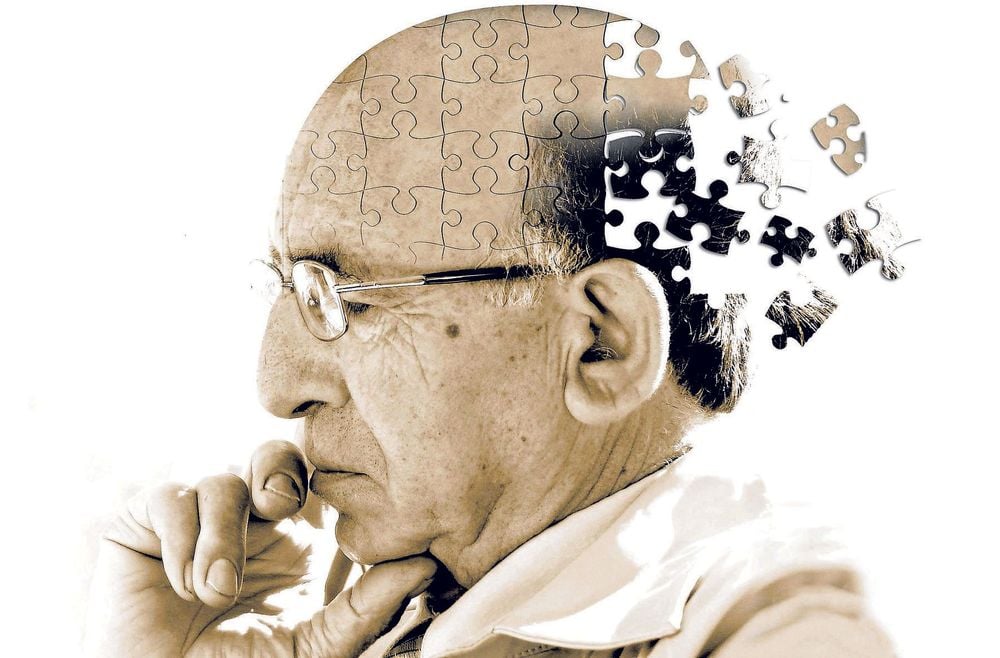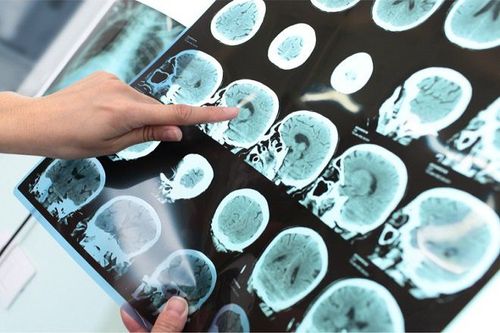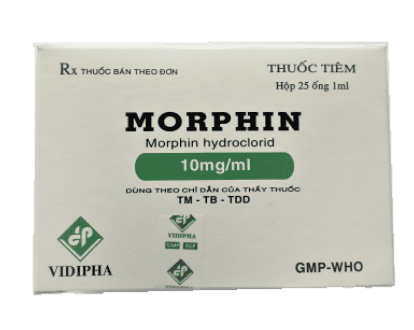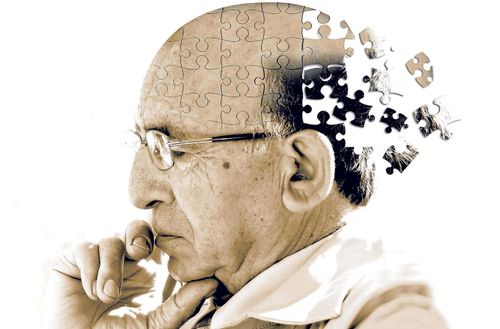This is an automatically translated article.
The article is professionally consulted by Master, Doctor Huynh An Thien - Neurosurgeon - Department of Examination & Internal Medicine - Vinmec Danang International General HospitalAlzheimer's is understood as a common memory loss disease in the elderly. Alzheimer's disease originates from the death of brain cells responsible for memory and other functions.
1. What is Alzheimer's disease?
Alzheimer's disease is an irreversible brain disease that gradually destroys memory, language ability and thinking ability, eventually, the patient is unable to complete even the smallest tasks. The disease usually progresses slowly, starting with mild transient absent-mindedness. When it reaches the end stage, the patient often has severe brain damage. It is one of the leading causes of death in the elderly.On average, people with Alzheimer's disease can only live for 8-10 years from the time of disease. However, there are still cases of living longer if detected early and treated properly. On the other hand, the progression of Alzheimer's fast or slow depends on each person. Although the origin of Alzheimer's disease may not be genetic and is not known, the risk is often higher if there is a family member with the disease. This risk doubles every 5 years after age 65.
2. Origin of Alzheimer's disease
Alzheimer's disease is named after Dr. Alois Alzheimer. In 1906, Dr. Alzheimer noticed unusual changes in the brain tissue of a woman who had died of a mental illness. The patient's symptoms included memory loss, language disturbances, and unpredictable behavior. After the woman died, the doctor examined her brain and found many abnormal masses (later known as amyloid plaques) and tangled bundles of fibers (later called neurofibrillary, or "entangled plexuses") ").The formation of amyloid plaques and plexuses in the brain is still considered one of the main features and origins of Alzheimer's disease. Another condition observed in patients is the loss of connection between nerve cells (neurons) in the brain. Nerve cells are the organs that help transmit messages between different parts of the brain and from the brain to other organs in the body.
In the wake of Dr. Alzheimer's findings, scientists continue to unravel the complex changes in the brain involved in the onset and progression of Alzheimer's disease. Then, experts say, it seems that the changes in the brain occurred a decade before memory loss and other cognitive problems appeared.
In fact, in the preclinical stage of Alzheimer's disease, the patient hardly shows any symptoms, but the abnormal changes are already taking place right inside the patient's brain. Amyloid plaques and plexuses are gradually formed. In contrast, healthy neurons, once deactivated, lose connection with other neurons and die. In addition, there are many other complex changes in the brain that are also believed to be the source of Alzheimer's disease.
The initial damage seems to take place only in the hippocampus and the cerebral cortex - two parts necessary for memory retention. As more neurons die, the rest of the brain is also affected, they begin to decrease activity and shrink. By the late stages of Alzheimer's disease, the brain damage has spread very widely and the entire brain tissue has shrunk significantly.

3. Historical milestones of the discovery of Alzheimer's disease
3.1. First Described Alzheimer's Disease Dr. Alois Alzheimer was the first to describe the symptoms of a patient believed to have some form of brain disorder in 1906. Psychiatrist Emil Kraepelin, a colleague of Dr. Alzheimer, gave the disease the name Alzheimer's in a 1910 medical book.3.2. NIA Established The United States Congress established the National Institute on Aging (NIA) as part of the National Institutes of Health (NIH) in 1974.
NIA's mission is to better understand the nature of aging and seek to improve the quality of life for the elderly. The NIA is also the federal government's source of funding for research into the origins of Alzheimer's disease.
3.3. Public Awareness of Alzheimer's Disease In a 1976 editorial, neuroscientist Dr. Robert Katzman stated that Alzheimer's disease is the most common form of dementia and presents a significant challenge to public health. copper.
This event helps the community to get initial awareness of this disease, and also kickstarts many brain related research projects through NIA.
3.4. Alzheimer's Association Established Jerome Stone and other members of groups that support families of Alzheimer's patients went to NIA to form the Alzheimer's Association in 1980.
Stone became the association's first president, with the common goal of:
Provide supportive services to families affected by Alzheimer's disease; Promote more research projects on this disease. 3.5. Root cause of brain damage identified The main markers of Alzheimer's disease inside the brain are due to the large build-up of two proteins: beta-amyloid and neurofibrillary.
Beta-amyloid was discovered in 1984. Two years later, neurofibrillary was discovered in the brains of people with Alzheimer's. Both of these proteins are capable of causing brain cell damage.
3.6. The First Trial of an Alzheimer's Drug In 1978, the NIA and the Alzheimer's Association partnered with Warner-Lambert Pharmaceuticals (later Pfizer) to begin the first clinical trial of a drug that works. used to treat symptoms of Alzheimer's disease.
In 1993, the US Food and Drug Administration (FDA) officially approved tacrine for the treatment of Alzheimer's. Then, four other Alzheimer's drugs were approved over the next decade.
3.7. Reagan was diagnosed with Alzheimer's Former President Ronald Reagan announced that he had Alzheimer's disease on November 5, 1994. He was 83 years old then.
At that time, Reagan was the first celebrity to get sick. His announcement drew public attention to Alzheimer's disease. Reagan died in 2004 of pneumonia and complications of Alzheimer's.
Many experts are beginning to weigh the difference between common age-related dementia and Alzheimer's disease.
3.8. Research on the relationship of genetics to disease risk In 2003, the Alzheimer's Association and NIA began to develop a study to see whether the risk of Alzheimer's disease is related to genetic factors. The federal government funded this research.
3.9. NAPA Act Signed In 2011, President Obama signed into law the National Alzheimer's Project Act (NAPA). NAPA is the first legislation to outline a national strategy for research and care for people with Alzheimer's. The act also covers support for caregivers of patients.
A year later, the National Alzheimer's Plan was announced, with the goal of finding ways to prevent Alzheimer's by 2025.
4. Recognize the Early Signs and Symptoms of Alzheimer's

The early symptoms of Alzheimer's often vary from person to person. For the vast majority of cases, a decline in cognitive abilities (not directly related to memory), such as the ability to use words, problems with vision, space, reasoning, or judgment often signals the early stages of Alzheimer's disease. Scientists are studying biomarkers (biomarkers of Alzheimer's found in images of the brain, cerebrospinal fluid, and blood) to detect early changes in the brains of people with MCI and in normal people may be at increased risk of Alzheimer's disease.
Studies suggest that early detection of risk is possible, but more research needs to be done before these techniques can be used in routine diagnosis of Alzheimer's disease. .
Please dial HOTLINE for more information or register for an appointment HERE. Download MyVinmec app to make appointments faster and to manage your bookings easily.
References: Nia.nih.gov, Healthline.com, Mayoclinic.org













